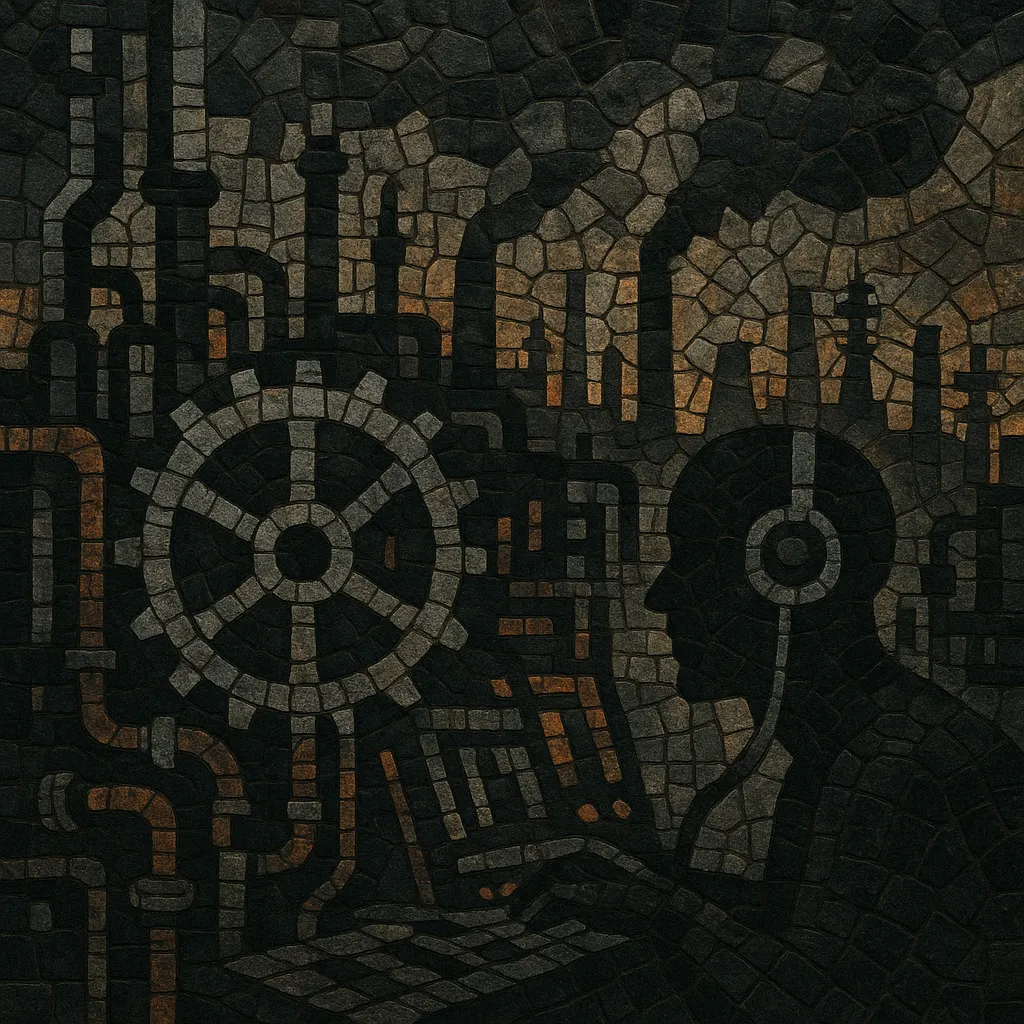Electro-industrial is a dark, dense strain of electronic music that fuses the mechanized textures of industrial with the sequenced precision of electronic body music (EBM) and the melodic sensibilities of synth-pop. It emphasizes layered sound design, heavy sampling, distorted or whispered vocals, and brooding atmospheres over straightforward club functionality.
Typical tracks feature complex, syncopated bass sequences, metallic percussion, and evolving noise beds that create a cinematic, sometimes nightmarish mood. Tempos most often sit in the mid-tempo range (roughly 95–125 BPM), and harmonies lean toward minor keys, dissonance, and chromatic tension.
Lyrical themes frequently explore dystopia, psychological turmoil, bio-mechanical metaphors, surveillance, and anti-authoritarian critiques, with production aesthetics that foreground grit, saturation, and textural contrast.
Electro-industrial emerged in the mid-1980s, with Canada—particularly Vancouver—often cited as a primary cradle thanks to groups like Skinny Puppy and Front Line Assembly. These artists extended the harsher, more experimental side of industrial while adopting EBM's sequenced basslines and the accessible synthetics of synth-pop. Early production relied heavily on hardware samplers, drum machines, and analog/digital synths to sculpt layered, cinematic soundscapes.
By the late 1980s and early 1990s, Belgium and Germany developed vital scenes. Acts such as The Klinik and yelworC helped shape a colder, more monolithic aesthetic. Independent labels and distributors (e.g., Zoth Ommog, Ant-Zen, and others) facilitated a vivid network of clubs, compilations, and mail-order catalogs that spread the genre across Europe and North America.
The 1990s saw electro-industrial fork into related strands. “Dark electro” refined the style toward bleak atmospherics and haunting melodic motifs, while the parallel rise of industrial metal and industrial rock brought broader attention to post-industrial sounds overall. Artists increasingly incorporated sophisticated sampling, granular manipulation, and cinematic arrangements, while live shows leaned into visual intensity—strobes, video art, and performance theatrics.
With the democratization of digital audio workstations and soft-synths, production became more intricate and accessible. Electro-industrial aesthetics influenced and intersected with aggrotech/hellektro, power noise (rhythmic noise), and futurepop, as well as select strands of techno and darker forms of synthwave. Legacy artists continued to evolve while new producers blended the hallmark textures—distortion, sampling, and mechanized rhythms—with contemporary mixing standards.
Electro-industrial remains a cornerstone of post-industrial music. Its emphasis on textural narrative, psychological depth, and sound-design-forward composition continues to inform club music, experimental electronics, and dark alternative pop, while its themes and visual language persist across cyberpunk and dystopian media.


